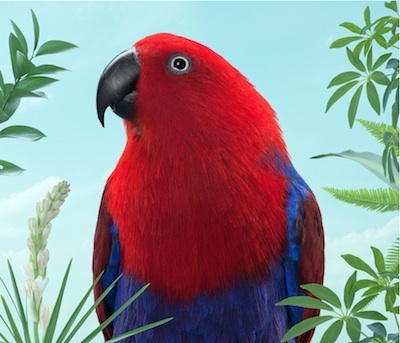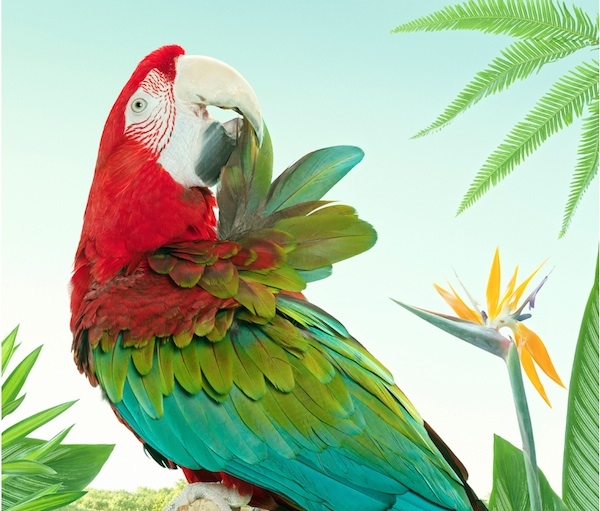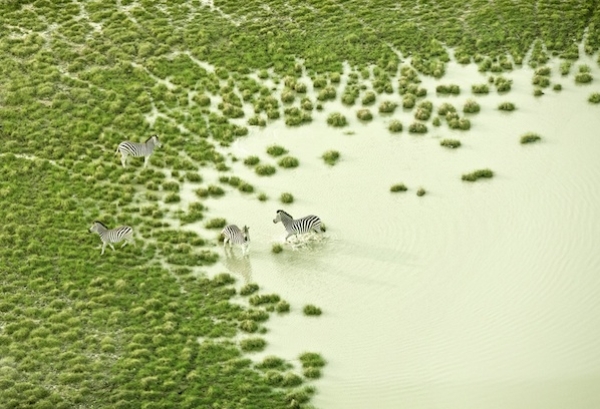Photographer Profile - Zack Seckler: "I'm always interested in creating something different"

|
|
|
In 2009, New York City-based commercial and fine-art photographer Zack Seckler created a series of stunning aerial images of Botswana’s Makgadikgadi Pan, one of the largest salt flats in the world. Shooting from an ultralight aircraft flying a few hundred feet off the ground, he was able to capture the landscape and wildlife below from a compelling perspective, leaning out to keep the plane of his camera’s sensor parallel to the ground.
“That gave the images a compressed, two-dimensional look,” Seckler says. Going aloft again, he shot similar images over the Okavango Delta, which he calls “one of the natural wonders of the world.”
Later, pleased with the result, Seckler sent samples of the work to a number of photography galleries. That’s how Robin Rice, of New York’s Robin Rice Gallery, first saw the Botswana images. Rice said she wanted to include a number of them in her annual Summertime Salon, an exhibition featuring work by the gallery’s roster of artists and a small number of emerging photographers. The reaction was positive, and in 2014 Rice gave Seckler a solo exhibition.
“I really had no idea that people would love the work as much as I did,” Rice says. “It doesn’t always work that way. Sometimes my favorite piece from a show won’t sell, and my least favorite sells.”
The blogosphere picked up on the series—there were articles at CNN.com and other sites—and soon Rice was fielding inquiries from collectors around the world.
Rice is including one of the Botswana photographs in this year’s Summertime Salon, which opens tomorrow, along with an image from Seckler’s newest body of work, which is a very different view of flora and fauna. The series features close-up portraits of exotic birds—including Macaws, African Greys and Cockatoos—seen against botanical backgrounds that were painstakingly created with Photoshop.
Rice says frankly that she has no idea how the new pictures will be received. “They’re fun, bright and cheerful; but who knows?” she says. In the end she was simply impressed by Seckler’s passion for the project.
Devotion to work counts. There’s a lesson in Seckler’s career about the value of seeking out new challenges and believing in the importance of what you’re doing.
Birds With Personality
“I’m always interested in creating something different. A lot of times when I have an idea for a project, I’ll spend time combing the web to see if anything like it has been done before, and it’s hard, because so much has been done before,” says Seckler.
The bird series, which has been been selected for the American Photography 31 annual, was the result of just such a creative exploration. Seckler—who has shot for, GQ, Marie Claire, New York and other magazines and commercial clients like Starbucks and Bank of America—was looking for a personal project to pursue. “I like to give myself an assignment every summer—something that I’m interested in that will make me stretch,” he says. “This one just kept getting more and more ambitious.”
The concept for the images came from Seckler’s memories of illustrated books he looked at as a child growing up near Boston. “I got entirely absorbed in pictures of elephants, monkeys, sharks and other fantastical creatures,” he notes at this blog. “When I actually saw the animals in zoos, it was nice – but they never lived up to what I saw in my books. Nothing beats imagination right?”

The images he created represent an attempt to see birds the way a child — or Henri Rousseau — might imagine them.
Some online research led Seckler to Parrot & Company, an exotic bird store in Stamford, CT, which allowed him to set up a makeshift studio—six lights and a seamless—in its basement.“I must say it was fun to photograph the birds,” says Seckler, who shot with a Canon 5D Mark III. “I’d never been around birds like this, and I didn’t realize how large they were, or how much personality they have. They were very active during the shoot. There was a lot of waste material on the seamless, and a few flybys.”
The jungle-like backgrounds in the pictures came from photographs in Seckler’s archives, as well as photos he shot at the New York Botanical Gardens and other nearby locations. He spent weeks layering the various images together in Photoshop. “I was obsessing about how to place each leaf,” he says. “I can’t tell you how many iterations I went through. For a person like me, who's obsessive about where to place objects in a frame, it was a bit of a rabbit hole.”
Happenstance Art
The aerial shots came about in a more happenstance way. Seckler had been sent to Botswana as part of a commission from a privately-funded non-profit organization to create images for a planned wildlife-conservation project, and he found himself with some spare time to kill.
“Following the job, I had a couple days before I returned home, and I was in the middle of nowhere with nothing to do—no TV, no Internet—and I asked my client if they had anything for me to do photographically so I wouldn’t lose my mind,” he says. “Somebody knew somebody with an ultralight—a two-seater— so I was able to go up with a pilot.” The experience, he says, was both terrifying and amazing.
“Immediately, it was like being over a giant canvas and being able to create brush strokes at will,” Seckler says. “It was very liberating, a beautiful environment and a beautiful perspective to view it from, and I fell in love with aerial photography from that moment.”
The abstract nature of the images appealed to Seckler, who began his career as a photojournalist after graduating from Syracuse University in 2003.

“I always had an interest in the medium as being more than something to simply document places,” he says. By 2008, he was shooting commercial work that often included large doses of visual humor.
The Botswana images manage to combine a conceptual visual appeal with documentary realism. Robin Rice calls them both “interesting and easy to live with.”
“There’s a lot of detail when you look at them up close,” she says. “The images were printed big because little waves in the water and things like that didn’t show unless we made them 27 by 40 inches.”
The bird photographs, printed at 24 by 24 inches, are also rich in detail, but the effect on viewers is far different. “The one question people ask most is, ‘Are the birds real?’” notes Rice.
Says Seckler, “The pictures get a love-hate response. People either realy love them or they just don’t get it.”
Which isn’t necessarily a bad thing.


